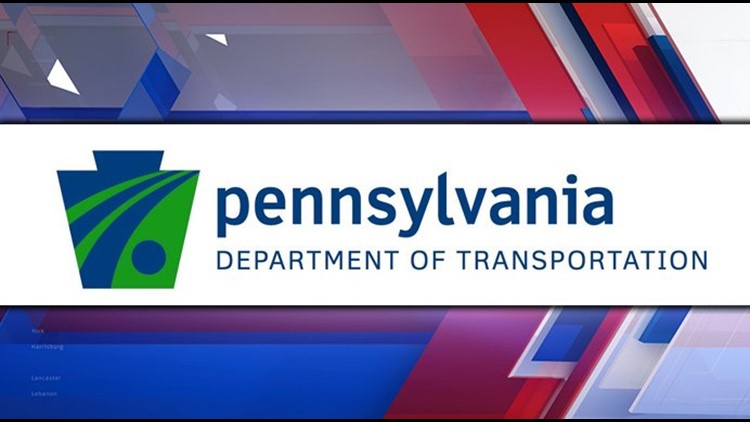HARRISBURG, Pa. – Due to high winds combined with sleet and ice in northwestern Pennsylvania, the Pennsylvania Department of Transportation (PennDOT) is imposing restrictions on certain trucks and other vehicles on the entire length of Interstates 86 and 90.
PennDOT is urging motorists to use caution during the event and generally reduce speeds and be aware of changing weather conditions.
Restrictions will begin at noon Saturday and will remain in place until conditions warrant their removal. The restrictions reflect Level 1 of the commonwealth’s draft travel restriction framework, and ban the following vehicles:
- Tractors without trailers;
- Tractors towing unloaded or lightly loaded enclosed trailers, open trailers or tank trailers;
- Tractors towing unloaded or lightly loaded tandem trailers;
- Enclosed cargo delivery trucks that meet the definition of a CMV;
- Passenger vehicles (cars, SUV’s, pickup trucks, etc.) towing trailers;
- Recreational vehicles/motorhomes;
- School buses, commercial buses and motor coaches;
- and motorcycles.
Restrictions will be communicated via variable message boards and the 511PA traveler information website (www.511pa.com) and smartphone apps.
Speed limits are restricted to 45 mph on these interstates for all vehicles while the vehicle restrictions are in place, and commercial vehicles not affected by the bans must move to the right lane. Additional speed restrictions on other interstates could be added depending on changing conditions.
In response to the anticipated storm, PennDOT has applied anti icing materials to many roads across the state and is activating its statewide command center and regional command centers in areas most affected by the storm.
To help make decisions regarding winter travel, motorists are encouraged to “Know Before You Go” by checking conditions on more than 40,000 roadway miles, including color-coded winter conditions on 2,900 miles, by visiting www.511PA.com. 511PA, which is free and available 24 hours a day, provides traffic delay warnings, weather forecasts, traffic speed information and access to more than 950 traffic cameras. Users can also see plow truck statuses and travel alerts along a specific route using the “Check My Route” tool.
511PA is also available through a smartphone application for iPhone and Android devices, by calling 5-1-1, or by following regional Twitter alerts accessible on the 511PA website.
Drivers should also prepare their vehicles by having a trusted mechanic check the cooling system, battery, hoses, drive belts, tires, and wiper blades, as well as all fluid levels, lights, wiper blades and tires often for the correct level of air pressure and adequate tire-tread depth to perform on ice and snow.
A vehicle emergency kit should be prepared or restocked containing items such as non-perishable food, water, first-aid supplies, warm clothes, a blanket, cell phone charger and a small snow shovel. Motorists should tailor their kits to any specific needs that they or their families have such as baby supplies, extra medication and pet supplies.
The Pennsylvania Emergency Management Agency (PEMA) works with county emergency management personnel to monitor unmet local needs during inclement weather affecting travel, utilities, and shelter. PEMA encourages Pennsylvanians to access Ready.pa.gov for free downloadable emergency kit checklists for the home and car.
Motorists should be aware that all vehicles should be fully clear of ice and snow before winter travel. If snow or ice is dislodged or falls from a moving vehicle and strikes another vehicle or pedestrian causing death or serious bodily injury, the operator of that vehicle could receive a $200 to $1,000 fine.
When winter weather occurs, PennDOT urges drivers to be extra cautious around operating snow-removal equipment. When encountering a plow truck, drivers should:
- Stay at least six car lengths behind an operating plow truck and remember that the main plow is wider than the truck.
- Be alert since plow trucks generally travel much more slowly than other traffic.
- When a plow truck is traveling toward you, move as far away from the center of the road as is safely possible, and remember that snow can obscure the actual snow plow width.
- Never try to pass or get between several trucks plowing side by side in a “plow train.” The weight of the snow thrown from the plow can quickly cause smaller vehicles to lose control, creating a hazard for nearby vehicles.
- Never travel next to a plow truck since there are blind spots where the operator can’t see, and they can occasionally be moved sideways when hitting drifts or heavy snowpack.
- Keep your lights on to help the operator better see your vehicle. Also remember that under Pennsylvania state law, vehicle lights must be on every time a vehicle’s wipers are on due to inclement weather.
- In addition to driving safely around plows, motorists are urged to drive according to conditions. If motorists encounter snow or ice-covered roads, they should slow down, increase their following distance and avoid distractions. Last winter in Pennsylvania, preliminary data shows that there were 440 crashes resulting in 221 injuries on snowy, slushy or ice-covered roadways where aggressive-driving behaviors such as speeding or making careless lane changes were factors.
PennDOT has created a Winter Safety media center, including social-media-sized graphics highlighting winter driving preparations and operations at www.penndot.gov in the “Media Center” under the “About Us” footer.
For more information on safe winter travel, an emergency kit checklist and information on PennDOT’s winter operations including a video, visit PennDOT.gov/winter. Additional winter driving and other highway safety information is available at PennDOT.gov/safety.
Follow the conversation by using #PAWinter on Twitter at www.twitter.com/PennDOTNews and visit the department on Facebook at www.facebook.com/PennsylvaniaDepartmentofTransportation.
SOURCE: PennDOT



